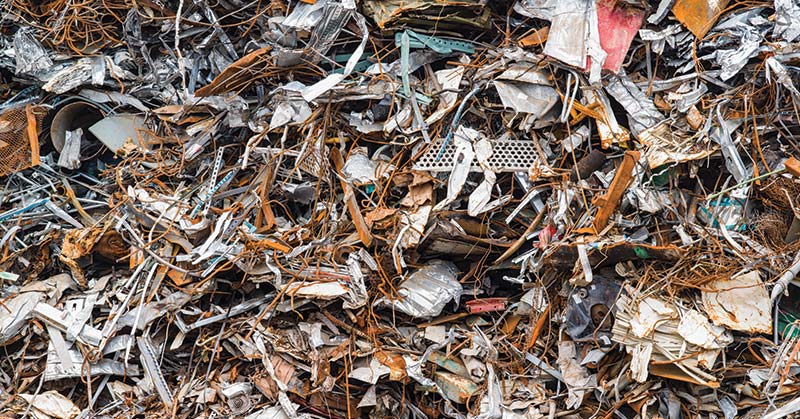Composting is an excellent way to recycle various organic materials, including shredded paper. Paper, often overlooked, is a carbon-rich material that can balance the nitrogen-rich materials in your compost.
In this blog post, we’ll guide you through the process of composting shredded paper, explaining its benefits and providing tips to make the process efficient and environmentally friendly.
Why Compost Shredded Paper?
- Waste Reduction: Composting shredded paper helps reduce landfill waste.
- Soil Health: It adds carbon to your compost, which is essential for healthy soil.
- Recycling: It’s an excellent way to recycle paper that can’t be put in the recycling bin, like paper with ink or food stains.
Step-by-Step Guide
Step 1: Choose the Right Paper
Not all paper is suitable for composting. Avoid glossy or heavily inked paper as it may contain harmful chemicals. Stick to plain, non-glossy paper like newspapers, office paper, or plain cardboard.
Step 2: Shred the Paper
Shredding increases the surface area of the paper, speeding up the composting process. Use a paper shredder or tear the paper into small strips by hand.
Step 3: Balance Your Compost
Remember the composting mantra: “Brown (carbon) and Green (nitrogen).” Your shredded paper is a brown material. Balance it with green materials like food scraps, grass clippings, or coffee grounds. A good ratio to aim for is about 2:1, green to brown.
Step 4: Add the Shredded Paper to Your Compost Bin
Mix the shredded paper into your compost bin. Avoid dumping it in as a thick layer, which can lead to matting and slow down the composting process.
Step 5: Maintain the Compost
Compost needs aeration and moisture to break down effectively. Turn your compost regularly to introduce oxygen and add water if it seems dry. However, be careful not to over-water, as soggy compost can become anaerobic and smelly.
Step 6: Monitor the Composting Process
Compost should be ready in 3-6 months, depending on the conditions. When it’s dark, crumbly, and earthy-smelling, it’s ready to use.
Tips for Successful Composting
- Size Matters: Smaller paper shreds decompose faster.
- Avoid Colored or Glossy Paper: These can release toxins into your compost.
- Layering: Alternate layers of green and brown materials for better decomposition.
- Regular Turning: This helps maintain aeration and speeds up the composting process.
- Check Moisture Levels: Your compost should be moist but not soggy.
Conclusion
Composting shredded paper is a simple and effective way to recycle paper and improve your garden soil’s health. By following these steps and tips, you can create a balanced compost that benefits your garden and the environment.
FAQs on How to Compost Shredded Paper
Q: Can I compost all types of paper?
A: No, not all types of paper are suitable for composting. Avoid glossy, heavily inked, or plastic-coated paper. Stick to plain, non-glossy paper like newspapers, office paper, or plain cardboard.
Q: Do I need to shred the paper before composting?
A: Yes, shredding the paper is recommended as it increases the surface area, allowing for quicker breakdown in the compost.
Q: What is the ideal size for shredded paper in compost?
A: Smaller pieces are better. Aim for shreds no larger than an inch wide. This size balances quick decomposition with maintaining necessary air pockets in the compost.
Q: How do I balance shredded paper with other compost materials?
A: Shredded paper is a carbon-rich material (“brown”). Balance it with nitrogen-rich materials (“green”) like food scraps or grass clippings, ideally in a 2:1 ratio of green to brown.
Q: Can I compost paper with ink on it?
A: Most modern inks are soy-based and safe for composting. However, avoid heavily inked paper or paper with metallic or fluorescent inks.
Q: How often should I turn my compost with shredded paper?
A: Turn your compost about once a week to ensure proper aeration and to speed up the composting process.
Q: Is it okay to compost shredded paper from a home office?
A: Yes, most home office paper, like printouts and envelopes, is fine for composting. Just remove any plastic windows from envelopes.
Q: How do I know if my compost is too wet or too dry?
A: Your compost should be moist like a wrung-out sponge. If it’s too dry, add water or green materials. If it’s too wet and smelly, add more brown materials like shredded paper or dry leaves.
Q: Can shredded paper be the only brown material in my compost?
A: While it’s possible, it’s better to have a mix of brown materials, like leaves or straw, along with shredded paper for a more balanced compost.
Q: How long does it take for shredded paper to decompose in compost?
A: The decomposition time varies, but typically, shredded paper will break down within 3-6 months in a well-maintained compost pile.




